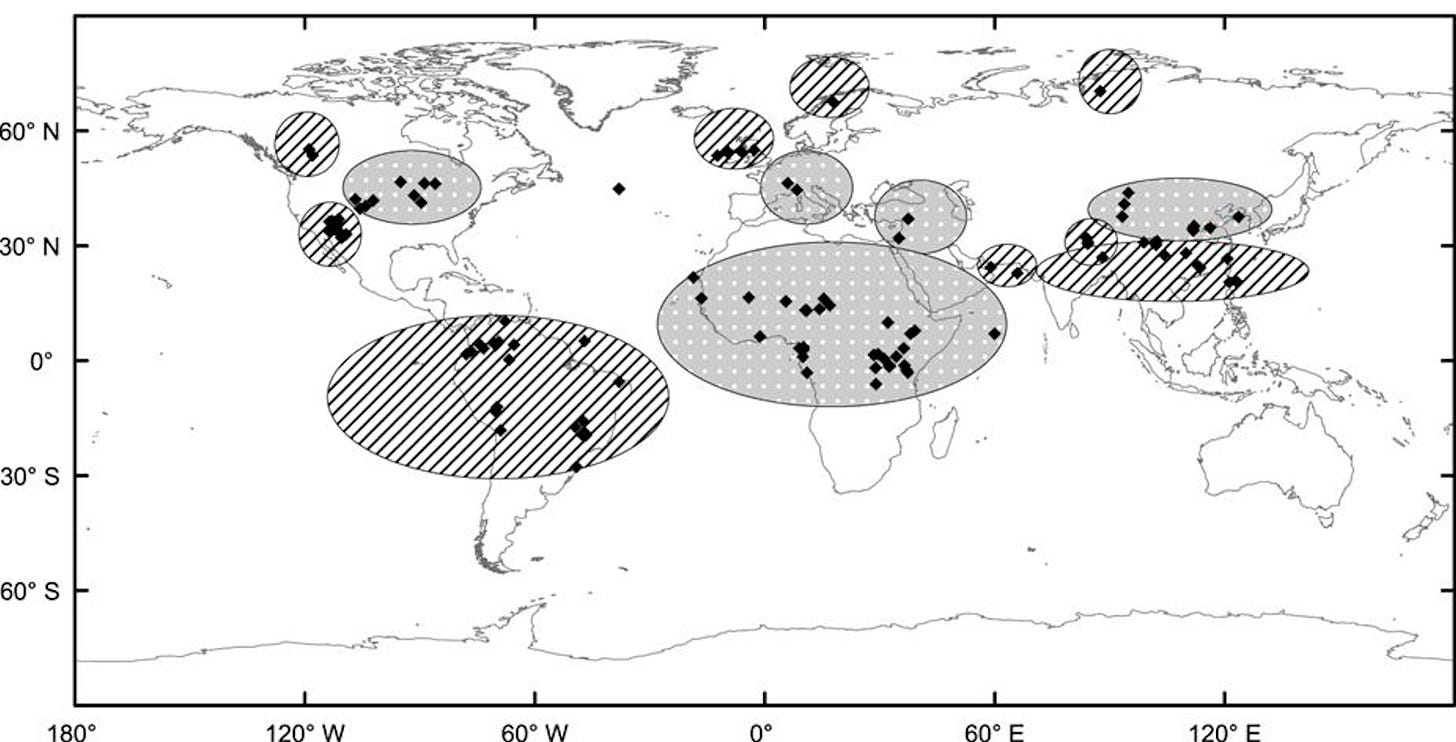Are GHGs Really to Blame? A Look at the 4.2-Kiloyear Climatic Event
How Natural Climate Events Debunk Today’s GHG-Driven Catastrophic Claims
Climate alarmism is reaching new heights in the media, with doomsday scenarios about the imminent collapse of the Atlantic Meridional Overturning Circulation (AMOC) making headlines. Articles like the recent one in Science Focus warn us of catastrophic climate shifts in the near future if greenhouse gas (GHG) emissions aren’t reined in. But this singular focus on GHGs as the driver of all climate change is not only scientifically shaky but ethically dubious. It ignores the fact that Earth has undergone significant, even global, climate events with little to no shifts in atmospheric GHGs. One such case, often overlooked in today’s discourse, is the 4.2-kiloyear event, a severe climate disruption that occurred about 4,200 years ago. Let’s explore this event in detail and examine what it tells us about natural climate variability and how the current GHG-centric narrative might be a convenient, and possibly lucrative, distraction.
What Was the 4.2-Kiloyear Event?
The 4.2-kiloyear event, which occurred around 2200 BCE, marked the end of the Holocene climatic optimum, a warm period that had sustained human civilization for millennia. This event triggered widespread aridification in regions such as the Middle East, North Africa, and parts of Asia, causing prolonged droughts that contributed to the collapse of multiple ancient civilizations, including the Akkadian Empire in Mesopotamia, the Old Kingdom in Egypt, and the Harappan civilization in the Indus Valley.

While the exact causes remain debated, one thing is clear: there was no significant rise in GHGs such as CO2 during this period. The climate shifts of the 4.2-kyr event were triggered by natural variations, likely changes in solar activity, shifts in oceanic circulation patterns like the AMOC, or even volcanic activity. What’s striking about this event is that it demonstrates how large-scale, global climate disruptions can occur without any discernible human interference or significant alterations in atmospheric GHGs.

The figure above provides a clear representation of CO2 levels throughout the Holocene, including key climatic events such as the Younger Dryas. Notably, throughout the period that encompasses the 4.2-kyr event, CO2 levels remained relatively stable, hovering around 270 ppm. This is critical to understanding the drivers of this major climate disruption. Despite significant global aridification and cooling, there was no corresponding change in atmospheric CO2 or other GHGs.
This absence of GHG spikes during major climate events like the 4.2-kyr event reinforces the point that climate shifts can occur independently of anthropogenic emissions. The figure shows that even during events such as the Medieval Warm Period (MWP) and the Little Ice Age, CO2 levels fluctuated very little.
In essence, the 4.2-kyr event and other natural climate shifts documented in this figure provide compelling evidence that attributing modern climate changes solely to CO2 increases is an oversimplification that ignores recent changes in Earth's climate system.
How Can We Blame CO2 for Everything Today?
Fast forward to today, where we are told that virtually all observed climate changes, be they shifts in temperature, increased storm activity, or even sea level changes, are driven by rising GHG levels. But suppose the 4.2-kyr event teaches us anything. In that case, it’s that attributing every climate fluctuation to one variable, especially when history shows us that complex, multifactorial drivers exist, is not only simplistic but misleading.
This brings us to the recent media hysteria over the potential collapse of the AMOC (Atlantic Meridional Overturning Circulation), a crucial system that redistributes heat from the tropics to northern regions.
Keep reading with a 7-day free trial
Subscribe to Irrational Fear to keep reading this post and get 7 days of free access to the full post archives.

